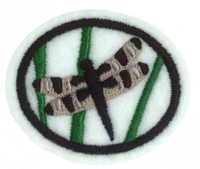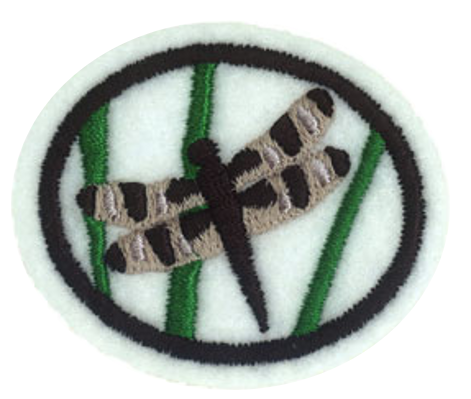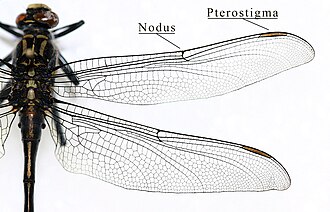Difference between revisions of "AY Honors/Odonates/Answer Key/es"
(Created page with "</noinclude> <!-- 5. ¿Cuáles otros insectos parecen similares a los odonatos? -->") |
(Created page with "</noinclude> <!-- 7. Conocer los siguientes términos sobre los odonatos: --> <noinclude>") |
||
| Line 46: | Line 46: | ||
{{CloseReq}} <!-- 6 --> | {{CloseReq}} <!-- 6 --> | ||
{{ansreq|page={{#titleparts:{{PAGENAME}}|2|1}}|num=7}} | {{ansreq|page={{#titleparts:{{PAGENAME}}|2|1}}|num=7}} | ||
| − | <noinclude> | + | <noinclude></noinclude> |
| − | </noinclude> | + | <!-- 7. Conocer los siguientes términos sobre los odonatos: --> |
| − | <!-- 7. | + | <noinclude></noinclude> |
| − | <noinclude | ||
| − | |||
{{ansreq|page={{#titleparts:{{PAGENAME}}|2|1}}|num=7a}} | {{ansreq|page={{#titleparts:{{PAGENAME}}|2|1}}|num=7a}} | ||
| − | <noinclude> | + | <noinclude></noinclude> |
| − | </noinclude | ||
| − | |||
| − | |||
| − | + | <noinclude></noinclude> | |
| − | <noinclude | ||
| − | |||
{{CloseReq}} <!-- 7a --> | {{CloseReq}} <!-- 7a --> | ||
{{ansreq|page={{#titleparts:{{PAGENAME}}|2|1}}|num=7b}} | {{ansreq|page={{#titleparts:{{PAGENAME}}|2|1}}|num=7b}} | ||
Revision as of 05:12, 19 April 2021
1
2
3
4
5
6
7
7a
7b
A type of photoreceptor organ in animals. Also called "simple eyes", ocelli are miniature eyes capable of sensing light but not distinguishing its direction. See also stemmata, which are structurally similar. Ocelli are found in many invertebrates. Insects in particular have two types of ocelli, dorsal ocelli and lateral ocelli.
7c
A term used to describe animals that are primarily active during the twilight -- at dawn and at dusk.
7d
Paired appendages on the rear-most segments of many arthropods, including insects and arachnids but not crustaceans.
7e
A "bloom" caused by pigment on top of an insect's cuticle that covers up the underlying coloration, giving a dusty or frosted appearance. The pruinescence is commonly white to pale blue, but can also be gray, pink, purple, or red; these colors may be produced by Tyndall scattering of light. When pale in color, pruinescence often strongly reflects ultraviolet.
7f
The veins which run throughout the wing tissue. These veins are extensions of the body's circulatory system.
7g
The many boxes formed by wing veins. They are nearly transparent in dragonflies.
7h
Eyes which consist of many light-sensitive lens, each with its own refractive system and each forming a portion of an image.
7i
They have a long abdomen with 10 visible segments, which terminate in clasping organs in both sexes.
7j
The part where the wings are attached.
7k
A fused mouthpart that forms the floor of the mouth of an insect.
7l
The wings closer to the head
7m
The pterostigma is a cell in the outer wing of insects which is often thickened or coloured and so stands out from other cells. It is particularly noticeable in dragonflies, but present also in other insect groups, such as snakeflies, hymenopterans and megalopterans. The purpose of the pterostigma, being a heavier section of the wing in comparison to nearby sections, is to assist in gliding. Without the pterostigma, self-exciting vibrations would set in on the wing after a certain critical speed, making gliding impossible. Tests show that with the pterostigma, the critical gliding speed is increased 10-25% on one species of dragonfly.
7n
The wings closer to the tail.
7o
The anterior, uppermost part of the head of an insect.
8
As mentioned above, their eating habits make them one of nature’s most beneficial insects from man’s perspective. Their value in mosquito control is immeasurable. They are among some of the most colorful, eye-catching and attractive of all insects. They also are a good indicator of the environmental conditions in their breeding habitat.
9
Since there are over 5900 species in the world and perhaps several hundred where you live, A good field guide will come in handy.
- For North America try Dragonflies through Binoculars: A Field Guide to Dragonflies of North America. This book allows for quick and easy identification of all the 300-plus species of dragonflies that have been found in the United States and Canada. In these well-illustrated pages, Sidney W. Dunkle answers any query the beginner or expert might have on the subject of dragonfly-watching on this continent--what kind of binoculars to buy, where to start looking for dragonflies, how to photograph these striking creatures, which clubs or societies to join, and so forth. Other important features for this handy field guide include detailed accounts of every species mentioned, useful information on habitats, explanations of mating rituals, full-color photographs of most of the species described, and range maps.
- For Australia try The Complete Field Guide to Dragonflies of Australia This photographic guide covers the 324 species of damselflies and dragonflies of Australia. Each species is given a color photograph, text, a color range map and usually line drawings. Anyone interested in Australian damselflies and dragonflies will like this book.
- For Southern Africa try Field Guide To Insects Of Southern Africa
Happy hunting.
10
The first step is to find an Odonate. The best way is to use a net, as catching with hands has a high failure rate and is likely to injure the insect.
Method #1: The SWING METHOD is for flying insects. Swing the net like a baseball bat and try to catch the dragonfly in it. Follow through on your swing, especially with flying odonates, (like a tennis serve or golf swing) so that the dragonfly is completely in the net and can't fly out. As you end the swing, close the net by rotating the net handle.
Method #2:The PANCAKE METHOD is for resting insects. Just put the net over the insect. Once you've trapped the dragonfly, hold the net flat on the ground and lift the closed end of the net with your hand. Usually the dragonfly will fly up into the net. Than grab the net below the dragonfly and close it to keep the dragonfly in.
Like most things, the best way to catch a dragonfly is from behind. If possible avoid allowing your shadow to fall across the insect since their view is blocked directly to the rear. It is also best to swing at flying insects from behind if possible for the same reason and it avoids having the dragonfly crash head-on into the net.
Now you need to remove the dragonfly from the net. Try to get all 4 wings and hold them together above the ode's back. Then gently take the bug out of the net. Be careful. Remember the idea is to not injure the insect. It is possible to pull off a leg or the head (especially if it is biting the net) You also do not want to get hurt. Dragonflies can bite fingers and it can hurt.
After capturing the insect, examine it briefly with a hand lens. When finished, release the dragonfly or damselfly into the air or place onto a perch.
If you are not planning to immediately release the dragonfly, plan where you are going to keep your dragonfly and what you plan to do with it beforehand. The longer a dragonfly is held in captivity, the less likely its chance for survival. If you must keep it for an extended period of time keep it in a dark cool place, preferably a cooler. The bug's metabolism will slow down and his color will sometimes change dramatically. Once it is again brought to outdoor temperatures the normal color will come back, but usually after the dragonfly has flown away.
Dragonflies are more easily caught during certain times. Some species are more active during the mornings and some during the evening, so knowing these details about the species can help. Feeding time is a distracted time so that can be a good catch time. Dragonflies are also slower fliers in cool weather when their wings tend to be slower to warm up for flying and their reflexes are reduced.
There are some families, notably the Cruisers and Spiketails and also a few Darners, who routinely patrol up and down streams and rivers keeping to the same flight paths even when you are near them. If you wait patiently anticipating their next patrol, you stand a very good chance of netting them. Source



